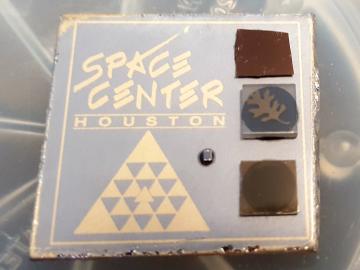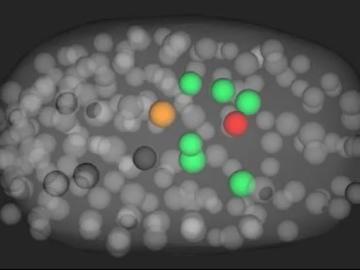
Filter News
Area of Research
- Advanced Manufacturing (4)
- Biology and Environment (9)
- Computational Engineering (1)
- Computer Science (5)
- Energy Science (18)
- Fusion and Fission (15)
- Fusion Energy (11)
- Materials (23)
- Materials for Computing (4)
- National Security (9)
- Neutron Science (6)
- Nuclear Science and Technology (11)
- Quantum information Science (7)
- Supercomputing (26)
News Type
News Topics
- (-) Composites (22)
- (-) Fusion (49)
- (-) Machine Learning (54)
- (-) Molten Salt (7)
- (-) Polymers (21)
- (-) Quantum Science (60)
- 3-D Printing/Advanced Manufacturing (93)
- Advanced Reactors (26)
- Artificial Intelligence (94)
- Big Data (67)
- Bioenergy (86)
- Biology (102)
- Biomedical (55)
- Biotechnology (29)
- Buildings (55)
- Chemical Sciences (50)
- Clean Water (31)
- Computer Science (159)
- Coronavirus (31)
- Critical Materials (18)
- Cybersecurity (17)
- Education (2)
- Emergency (4)
- Energy Storage (69)
- Environment (172)
- Exascale Computing (52)
- Fossil Energy (7)
- Frontier (46)
- Grid (56)
- High-Performance Computing (94)
- Hydropower (12)
- Irradiation (2)
- Isotopes (40)
- ITER (7)
- Materials (89)
- Materials Science (98)
- Mathematics (12)
- Mercury (10)
- Microelectronics (3)
- Microscopy (38)
- Nanotechnology (33)
- National Security (66)
- Neutron Science (112)
- Nuclear Energy (90)
- Partnerships (37)
- Physics (43)
- Quantum Computing (39)
- Security (19)
- Simulation (53)
- Software (1)
- Space Exploration (23)
- Statistics (3)
- Summit (48)
- Transportation (71)
Media Contacts

A team of researchers has developed a novel, machine learning–based technique to explore and identify relationships among medical concepts using electronic health record data across multiple healthcare providers.

ORNL scientists had a problem mapping the genomes of bacteria to better understand the origins of their physical traits and improve their function for bioenergy production.

To study how space radiation affects materials for spacecraft and satellites, Oak Ridge National Laboratory scientists sent samples to the International Space Station. The results will inform design of radiation-resistant magnetic and electronic systems.

ORNL manages the Innovation Network for Fusion Energy Program, or INFUSE, with Princeton Plasma Physics Laboratory, to help the private sector find solutions to technical challenges that need to be resolved to make practical fusion energy a reality.

Scientists have developed a novel approach to computationally infer previously undetected behaviors within complex biological environments by analyzing live, time-lapsed images that show the positioning of embryonic cells in C. elegans, or roundworms. Their published methods could be used to reveal hidden biological activity.

A rapidly emerging consensus in the scientific community predicts the future will be defined by humanity’s ability to exploit the laws of quantum mechanics.

A team of scientists led by the Department of Energy’s Oak Ridge National Laboratory and the Georgia Institute of Technology is using supercomputing and revolutionary deep learning tools to predict the structures and roles of thousands of proteins with unknown functions.

A team led by the U.S. Department of Energy’s Oak Ridge National Laboratory demonstrated the viability of a “quantum entanglement witness” capable of proving the presence of entanglement between magnetic particles, or spins, in a quantum material.

Staff at Oak Ridge National Laboratory organized transport for a powerful component that is critical to the world’s largest experiment, the international ITER project.

Of the $61 million recently announced by the U.S. Department of Energy for quantum information science studies, $17.5 million will fund research at DOE’s Oak Ridge National Laboratory. These projects will help build the foundation for the quantum internet, advance quantum entanglement capabilities — which involve sharing information through paired particles of light called photons — and develop next-generation quantum sensors.


